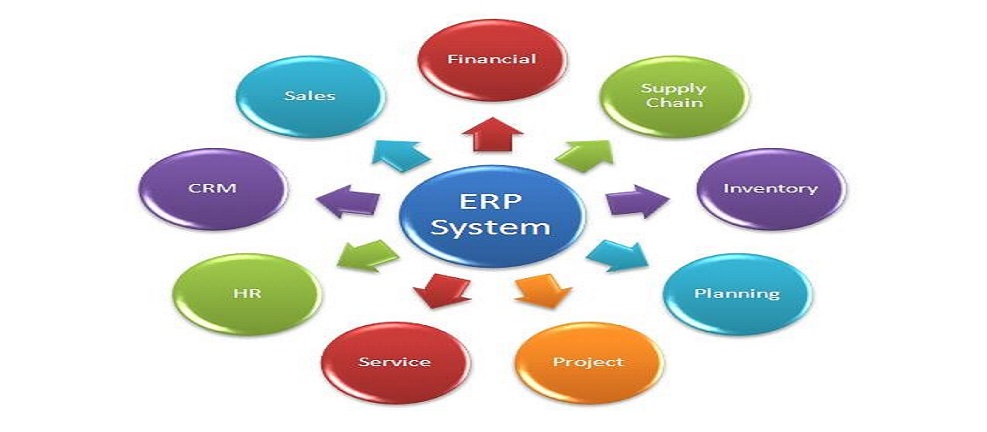For any business owner or IT leader, growth is the ultimate goal. Yet, achieving sustainable growth requires not just ambition but also the right tools and systems to manage complex operations. This is where Enterprise Resource Planning (ERP) systems come into play.
ERP systems integrate various business processes, creating a centralized platform that enhances efficiency, collaboration, and decision-making. In this guide, we’ll explore how ERP systems can fuel business growth, streamline operations, and prepare your company for future challenges.
What is ERP?
ERP (Enterprise Resource Planning) is a suite of applications and tools designed to manage and integrate core business functions. These include finance, human resources, supply chain, inventory, production, and customer relationship management. ERP acts as the backbone of an organization, enabling seamless communication and collaboration across departments.
At its core, ERP provides a centralized system that connects people, processes, and data, ensuring that businesses operate efficiently and effectively.
Key Areas Where ERP Drives Growth
Implementing an ERP system provides tangible benefits across various facets of a business. Here are the key areas where ERP can make a significant impact:
1. Resource Management
ERP systems track and manage business resources, such as raw materials, personnel, and financial assets. This ensures that resources are allocated efficiently and utilized effectively, minimizing waste and maximizing productivity.
2. Operational Planning
ERP aligns business commitments with available resources, facilitating synchronized planning. This leads to better forecasting, reduced downtime, and optimized workflows.
3. Customer Insights
By analyzing customer data, ERP systems offer valuable insights into consumer behavior. These insights help businesses identify trends, address shortcomings, and capture larger market share.
4. Data Integration
ERP creates a centralized data repository, enabling all departments to access the information they need. This improves collaboration, reduces silos, and ensures consistent data usage across the organization.
5. Process Automation
ERP tools automate routine tasks such as updating records, generating reports, and ensuring system security. Automation frees up time for IT professionals to focus on strategic initiatives.
How ERP Facilitates Business Growth
As businesses scale, they often face challenges in managing expanded operations. ERP systems address these challenges by offering:
1. Transparency
ERP systems provide real-time visibility into business processes, enhancing decision-making and accountability.
2. Data Security
With robust access controls and centralized data management, ERP ensures that sensitive information remains secure and accessible only to authorized personnel.
3. Cost Reduction
By streamlining operations and reducing redundancies, ERP significantly lowers operational costs.
4. Time Savings
Automating manual processes and centralizing data access saves time, allowing employees to focus on value-added activities.
5. Goal Setting
ERP systems support strategic planning by providing data-driven insights that help set realistic and achievable goals.
6. Simplified Data Management
ERP eliminates the need for multiple platforms, reducing complexity and ensuring consistent data usage.
7. Improved Financial Reporting
With integrated accounting modules, ERP simplifies financial reporting, leading to better compliance and transparency.
8. Enhanced Customer Satisfaction
ERP systems enable businesses to respond quickly to customer inquiries, track orders, and maintain updated communication, ensuring a superior customer experience.
Implementing ERP for Business Growth
To harness the full potential of ERP, businesses must approach implementation strategically. Here’s how:
1. Define Clear Objectives
Understand why you need ERP and what you aim to achieve. Objectives may include improved productivity, cost savings, or enhanced customer satisfaction.
2. Analyze Business Requirements
Conduct a thorough assessment of your current processes and identify areas that need improvement. This analysis will guide the selection of the right ERP system and modules.
3. Secure Leadership Support
Successful ERP implementation requires buy-in from top management to secure resources and drive organizational alignment.
4. Choose the Right ERP Vendor
Evaluate ERP solutions based on your business size, industry, and specific requirements. Leading options include SAP, Microsoft Dynamics, Oracle, and NetSuite.
5. Invest in Training
Provide comprehensive training to employees to ensure they can effectively use the ERP system. This minimizes resistance and accelerates adoption.
6. Leverage Automation
Utilize ERP’s automation features to eliminate manual tasks, reduce errors, and enhance operational efficiency.
7. Monitor and Optimize
Regularly review ERP performance and gather feedback from users. Use these insights to refine processes and address any issues proactively.
Why Virtual Delivery Centers (VDCs) Are Essential for ERP Success
ERP implementation is a complex process requiring specialized skills, careful planning, and ongoing support. Virtual Delivery Centers (VDCs) offer a modern solution that simplifies this journey while delivering significant cost and efficiency benefits.
Benefits of VDCs for ERP Implementation
-
Cost Efficiency: VDCs reduce implementation costs by up to 70% by leveraging remote teams and resources.
-
Access to Expertise: With pre-vetted professionals skilled in ERP systems, VDCs ensure smooth and efficient implementation.
-
Scalability: Easily scale teams based on project requirements, from initial deployment to post-implementation support.
-
Faster Deployment: Distributed teams work around the clock, accelerating project timelines and reducing delays.
-
Ongoing Support: VDCs provide continuous support to ensure ERP systems deliver sustained value and adapt to evolving business needs.
By partnering with a VDC, businesses can overcome implementation challenges, achieve seamless integration, and unlock the full potential of ERP systems.
